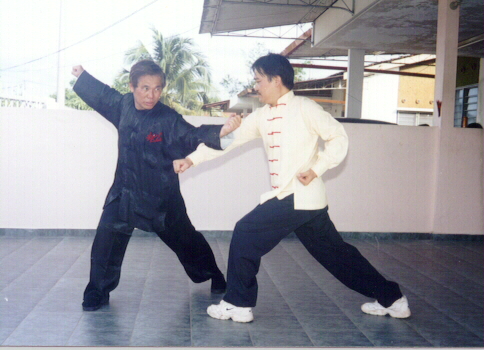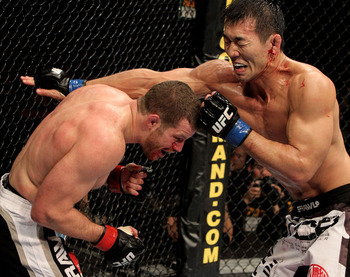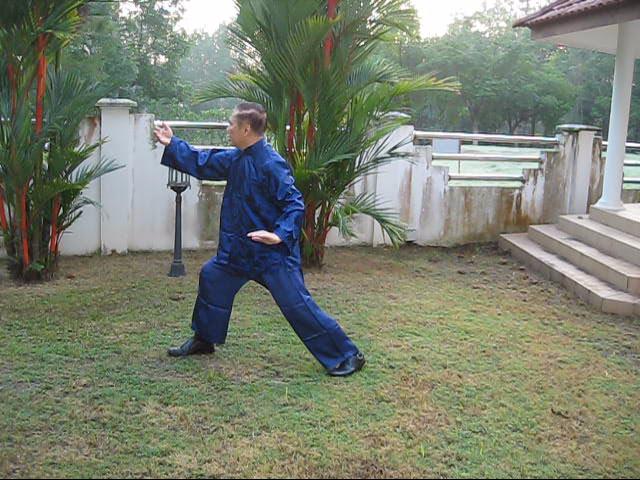THE AGGRESSIVE, THE EXTERNAL AND THE INTERNAL

The external art of Choy-Li-Fatt
Question
Since Choy Li Fatt was developed with combat in mind, and using external methods as a focus, are there any safeguards in place to prevent practitioners from becoming overly violent and aggressive (as seen in many Karate practitioners)?
-- Sifu Matt Fenton
Answer
Unlike internal arts, as an external art there are no in-built mechanisms in Choy-Li-Fatt to prevent practitioners from becoming overtly violent and aggressive.
This does not mean that Choy-Li-Fatt practitioners are violent and aggressive, or if they are not violent and aggressive at the start, they will become violent and aggressive as they progress. But if for any reasons, some Choy-Li-Fatt practitioners become violent and aggressive, there is nothing in Choy-Li-Fatt training to prevent, reduce or overcome the violent and aggressive feelings.
This is different in the case of internal arts. There are no factors in internal art training to make practitioners violent and aggressive. But if for other reasons, they start to become violent and aggressive, without doing other things but by just practicing their internal arts, they can prevent, reduce or overcome their violent and aggressive feelings. If they were already violent and aggressive in nature before practicing internal arts, their internal art training can reduce or overcome their violence and aggression.
On the other hand, some arts like much of the Karate, Taekwondo, Boxing, Kick-Boxing and Muay Thai practiced today, aggravate violent and aggressive feelings. If these practitioners were not violent and aggressive before their practice of these arts, their training may make them violent and aggressive. If they are violent and aggressive, not only their training does not reduce or overcome their violence and aggression, but it also aggravates these emotions.
There are, therefore, three categories in this respect:
- Martial arts that result in and aggravate violence and aggression.
- Martial arts that do not result in violence and aggression but also do not prevent, reduce or overcome them if these emotions arise due to other factors.
- Martial arts that do not result in violence and aggression and prevent, reduce or overcome these emotions if they arise due to other factors.
Why do different arts have different results in relation to violence and aggression? This is because of the different philosophy, nature and practice of these arts.

The aggressive art of Boxing
In external arts like Choy-Li-Fatt, Wing Choon and Praying Mantis, the combat philosophy is safety first. Although many practitioners tense their muscles, they do not purposely work themselves up in a frenzy; they attempt to be as relaxed as possible. In practical fighting, they pay much attention to their own safety, knowing well that just one strike, on themselves or on their opponents, can be fatal. This does not lead to violence and aggression, but may not prevent, reduce or overcome these emotions if they arise.
In internal arts like Taijiquan and Baguazhang, their philosophy paces cultivation over combat in terms of priority. The nature of the arts is chi flow. Hence, not only the practice of these arts does not lead to violence and aggression, but also it will prevent, reduce or overcome violence and aggression if they arise due to other reasons.
In our school, however, we practice Choy-Li-Fatt as well as Wing Choon and Praying Mantis as internal arts. Will the Choy-Li-Fatt taught at the coming Winter Camp be like the orthodox Choy-Li-Fatt taught elsewhere today?
The answer is both yes and no. The forms are the same, but the way we practice and apply it, is very different from the Choy-Li-Fatt most students practice today. Most Choy-Li-Fatt students practice it as an external art, but we do so internally. Even when we leave aside the external-internal difference, most Choy-Li-Fatt students use Boxing and Kick-Boxing in their combat application, but we use typical Choy-Li-Fatt techniques.
But when we compare to what Choy-Li-Fatt masters practice, ours is the same. The masters started their Choy-Li-Fatt training as an external art, but over many years of dedicated training it has become internal. The difference, however, is in the time-frame. Our students at the Winter Camp course do not need to practice for many years. They would attain the internal aspect of Choy-Li-Fatt in just a few days.
As usual, some Choy-Li-Fatt practitioners and other people may be angry. Whether they are angry or happy that I have revealed some secrets that may benefit them, is their business, and we are not going to argue with them. The answer here is for you and our students in Shaolin Wahnam, as well as other people who believe in us.
-- Grandmaster Wong Kiew Kit

The internal art of Taijiquan

The above is reproduced from the thread 20 Questions for Grandmaster: Choy-Li-Fatt and Kungfu against Other Styles in the Shaolin Wahnam Discussion Forum.
LINKS
